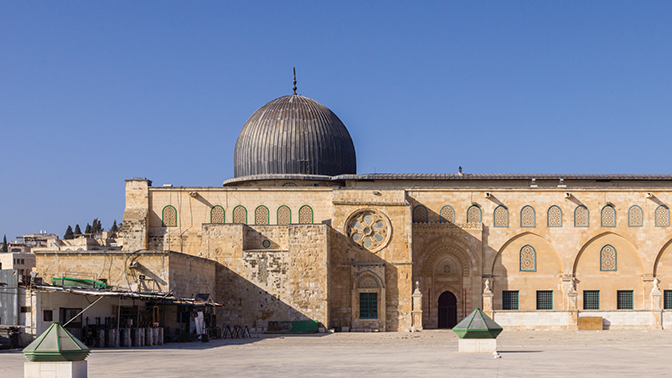



 Yusuf Dhia-Allah
Yusuf Dhia-AllahLast month, two historical monuments suffered fire damage on the same day — April 15. The Notre Dame Cathedral in Paris and al-Masjid al-Aqsa in al-Quds (Jerusalem), Palestine, were both gutted, suffering different degrees of damage. Whenever historical monuments are damaged, it is a great loss to humanity. Yet, the contrasting res-ponses to the two fires reveal a great deal about the West’s attitude.
The West projects itself as secular; religion supposedly has no place in its polity. France in particular is virulently opposed to religion. It banned hijab for Muslim girls in government schools in 2004 and many municipalities have led campaigns to ban the burkini — the full body-length dress worn by Muslim women at beaches.
Yet in the case of the Notre Dame Cathedral, not only French elite but also the government came out in full force expressing horror at the “loss” of a historical monument that is a symbol of Catholicism. Already, $1.13 billion have been pledged to restore the cathedral. Within minutes of the fire breaking out, French President Emmanuel Macron rushed to the scene and said he would have it rebuilt in five years.
Why is the secular regime in France so keen to restore a religious monument? If the Pope had said so, that would be understandable. The Yellow Vests movement in France that erupted over austerity measures has taken great offence at the regime’s response. Its leaders have pointed out that the regime has taken no notice of the needs of millions of French people suffering the ill effects of its policies yet it has pledged billions for a religious monument.
On April 20, more than 60,000 police and gendarmes were deployed across France to confront Yellow Vests protests. Domestic intelligence agencies had warned of a potential return of “rioters” intent on wreaking havoc in Paris and several other cities similar to last March’s protests that turned violent at times reflecting people’s anger.
On the same day (April 15), fire broke out in the guard’s room outside the roof of al-Marwani prayer area in al-Masjid al-Aqsa. While the Islamic Waqf fire brigade was able to douse the fire, it received scant media coverage anywhere. Apart from Palestinian related websites, there was little mention of the fire.
Al-Masjid al-Aqsa is the third holiest site of Islam. It is the first qiblah (direction of prayer) for Muslims. Al-Haram al-Sharif (the Noble Sanctuary) as it is called comprises al-Masjid al-Aqsa, the Dome of the Rock (with the golden dome), as well as several zawiyahs and madrasahs on the compound.
Zionist terrorists have for decades tried to undermine al-Haram al-Sharif as well as storm it to physically occupy it. Palestinians have valiantly resisted such encroachments at enormous price in life and blood. Heavily armed Zionist soldiers provide protection to Zionist encroachers.

By way of comparison, the Notre Dame Cathedral in Paris was built between 1163–1345ce. It was officially opened in 1345, less than 700 years ago. Al-Masjid al-Aqsa dates back to 638ce, when Jerusalem first came under the stewardship of the Muslims at the time of the khilafah of ‘Umar (ra). Initially, it was a modest structure and about 50 years later, it was rebuilt and expanded by the Umayyad ruler ‘Abd al-Malik and finished by his son al-Walid in 705ce.
While the masjid and the sacred compound have undergone periodic expansions and additions, its historical significance cannot be underestimated. For Muslims, it is the site from where the noble Messenger (pbuh) went on the Mi‘raj — his journey to Heaven. Thus, it has special reverence in Islamic spirituality and history.
Since the Zionist colonization of half of Jerusalem in 1948 and the rest in 1967, they have tried to encroach on al-Haram al-Sharif. Driven by fanaticism, the Zionists want to destroy al-Masjid al-Aqsa so that they can build their mythical third temple on its site.
They have carried out “excavations” underneath the structure to undermine it. There have also been periodic arson attacks. In all cases, the purpose has been to destroy al-Masjid al-Aqsa so that the fanatic Zionists can fulfill their mythical dream.
Global indifference to successive attacks on al-Masjid al-Aqsa, including arson attacks, clearly point to their complicity in this diabolical plot. It is for Muslims to be vigilant and prepare to confront Zionist crimes. Unfortunately not much can be expected from the Arabian regimes that are openly aligned with the Zionists against the Muslims.
